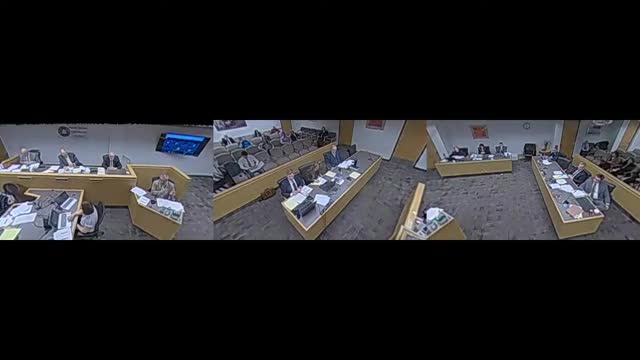Mr. Gleba critiques Pacific Corp's insurance premium allocation for Utah rate payers
March 23, 2025 | Utah Public Service Commission, Utah Subcommittees, Commissions and Task Forces, Utah Legislative Branch, Utah
This article was created by AI summarizing key points discussed. AI makes mistakes, so for full details and context, please refer to the video of the full meeting. Please report any errors so we can fix them. Report an error »

In a recent government meeting held on March 23, 2025, discussions centered around the allocation of insurance premiums by Pacific Corp, particularly regarding how these costs are distributed among different jurisdictions, including Utah. The meeting featured testimony from Mr. Gleba, a consulting actuary with over 35 years of experience, who emphasized the need for a more precise methodology in determining these allocations.
Mr. Gleba, representing the Division of Public Utilities (DPU), highlighted concerns about the current allocation formula, known as the 20/20 protocol, which relies on a factor called system overhead (SO). He argued that this method does not adequately reflect the risks associated with the insurance premiums, particularly in light of the significant costs involved. According to Mr. Gleba, the SO factor primarily accounts for general expenses and does not sufficiently address the unique risks tied to wildfire liability and other factors that impact Utah ratepayers.
In his testimony, Mr. Gleba proposed an alternative allocation method that he believes would better represent the underlying risks associated with the premiums. He suggested that the current allocation factor of approximately 44% could be adjusted to around 18%, which he argues would provide a more accurate reflection of the actual risks involved.
The implications of this discussion are significant for Utah residents, as changes in the allocation methodology could lead to adjustments in insurance costs for ratepayers. The meeting underscored the importance of ensuring that insurance premiums are allocated fairly and transparently, particularly in a state that faces unique challenges related to wildfire risks.
As the DPU continues to evaluate these proposals, the outcomes of this meeting could shape future insurance policies and costs for residents, highlighting the critical connection between regulatory decisions and community financial impacts. The next steps will involve further discussions and evaluations of Mr. Gleba's proposed methodology, as stakeholders seek to ensure that the allocation of insurance premiums is both equitable and reflective of actual risk factors.
Mr. Gleba, representing the Division of Public Utilities (DPU), highlighted concerns about the current allocation formula, known as the 20/20 protocol, which relies on a factor called system overhead (SO). He argued that this method does not adequately reflect the risks associated with the insurance premiums, particularly in light of the significant costs involved. According to Mr. Gleba, the SO factor primarily accounts for general expenses and does not sufficiently address the unique risks tied to wildfire liability and other factors that impact Utah ratepayers.
In his testimony, Mr. Gleba proposed an alternative allocation method that he believes would better represent the underlying risks associated with the premiums. He suggested that the current allocation factor of approximately 44% could be adjusted to around 18%, which he argues would provide a more accurate reflection of the actual risks involved.
The implications of this discussion are significant for Utah residents, as changes in the allocation methodology could lead to adjustments in insurance costs for ratepayers. The meeting underscored the importance of ensuring that insurance premiums are allocated fairly and transparently, particularly in a state that faces unique challenges related to wildfire risks.
As the DPU continues to evaluate these proposals, the outcomes of this meeting could shape future insurance policies and costs for residents, highlighting the critical connection between regulatory decisions and community financial impacts. The next steps will involve further discussions and evaluations of Mr. Gleba's proposed methodology, as stakeholders seek to ensure that the allocation of insurance premiums is both equitable and reflective of actual risk factors.
View full meeting
This article is based on a recent meeting—watch the full video and explore the complete transcript for deeper insights into the discussion.
View full meeting

